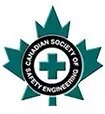Posted: Feb 15 '19

Our government insists that all workers, where exposure to Hydrogen Sulfide (H2S) is real, be provided with appropriate training to stay safe from the gas. But, why exactly? What makes H2S so dangerous that every worker at risk of exposure needs special training?
Below, are a few ways our H2S Alive training course can prove a lifesaver for at-risk workers.
The main reason every at-risk worker needs the H2S Alive training course is the fact hydrogen sulfide, at high concentrations, loses its trademark rotten egg smell. At low concentrations (0.01 to 0.03 parts per million), hydrogen sulfide gas has a characteristic rotten egg smell that makes it very easy to detect. Workers, however, must understand that relying solely on that smell can be misleading given that at higher concentrations, the smell disappears and the gas becomes odorless. Only the H2S Alive training course can help workers understand and appreciate this change in H2S characteristics.
Another major reason why the H2S Alive training course is vital is that at high concentrations (between 4.3% and 46%), H2S can catch fire and explode without notice. It doesn’t end there; hydrogen sulfide is incompatible with strong oxidizers such as chlorine triflouride and nitric acid. When the gas comes in contact with any of these compounds, it can react violently or ignite spontaneously. Finally, H2S can also react with rust or corrosion deposits on equipment to form iron sulphide. Iron sulphide is pyrophoric meaning that it can ignite spontaneously when exposed to air. Workers need the H2S Alive training course to learn about and protect themselves from these situations.
Short term exposure to H2S can cause a myriad of problems. At lower concentrations, patients experience irritation to the nose, eyes, throat, and lungs. Nausea, tearing of the eyes, and compromised sense of smell are also possible. At higher concentrations, respiratory paralysis, irregular heartbeat, collapse, and death without rescue are possible. Long term exposure, meanwhile, can cause reduced lung function, damage to the cardiovascular system, and neurological effects, including personality changes.
The H2S Alive training course is meant to arm workers with the knowledge to detect and shield themselves from the gas, as well as the skills to perform first aid and H2S rescue in the unfortunate event that they or their colleague is exposed.
H2S is a dangerous and deadly gas, but its hazards can be prevented. Don’t wait until it’s too late. Contact us today to enroll your workers in a H2S Alive training course.
REQUEST INFO ON OUR COURSES



